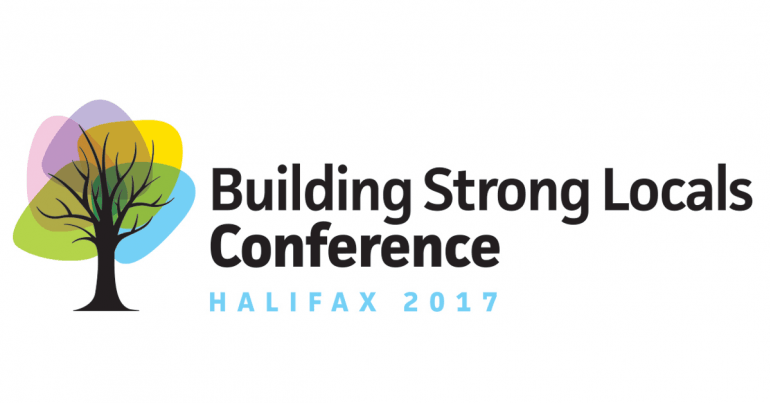
As union leaders and activists, we know we can’t win our battles without the support and commitment of our rank-and-file members. We know we can’t do it alone.
We also know that getting members out to meetings, getting them involved, and getting them to care about “union stuff” can take a lot of work. Sometimes it feels impossible.
But there is good news. Many CUPE locals have been exploring new methods of activating members that have proven effective. And they’re nothing fancy, and they don’t rely on the latest technology. In fact, they rely on some of the oldest human technologies: talking and listening.
Conversation Case Study: PEI education locals
CUPE locals in the education sector on Prince Edward Island are using one-on-one conversations with an appointed “go-to-person” in each workplace to provide a two-way communication network between the members and the executive.
Here’s how it works: The “go-to-people” ask members a series of questions about what they would like from their union. The executive responds to what they hear. The executive now has solid information on the views of the membership, they respond and build trust, and the members feel valued and respected. In the case of the PEI locals, members told them they wanted more information and more social events. The executive responded by creating improved newsletters, regular emails and family-friendly social events.
The result? More participation, more volunteers, and more support for the executive from the rank-and-file. And the “go-to-people,” going forward, provide a permanent link between the members and the executive so that the locals are always responsive to the members’ issues. This method engages members; making them feel valued and part of the union. At the same time, the executive are responsive with improved accountability to the members.
Key tip from the PEI experience:
• When you plan membership outreach, it’s important to take into consideration the size of the local, the configuration of workplaces and shift schedules. There is not a one-size-fits-all approach.
Most of all, your strategy needs to be relevant. For the PEI education locals they were able to talk about the union through a short survey of their members, and they were able to deal with the many workplace locations with four locals working together.
Conversation Case Study: Toronto “inside” workers
CUPE Local 79 represents “inside” workers at the City of Toronto and is CUPE’s largest local with 20,000 members and over 800 worksite locations. Across this huge and diverse local, one issue looms large: excessive workload caused by intentional understaffing by the city.
Determined to increase their connection with the membership, Local 79 has come up with a plan specific to their needs. The local is using the issue of workload to talk to members directly to hear about the impact on them and to collect their ideas for solutions. With 20,000 members, planning one-on-one conversations with each and every one of them might seem pretty daunting. You might not even think it was possible.
Here’s how they’re doing it: at some worksites, the local is conducting lunchtime meetings where facilitated group sessions allow members to tell their own workload story and to provide suggestions for how the local can work to address the issue with the city and make things better. In other worksites, where the shift schedule prevents lunchtime meetings, local organizers have met directly with the members one-on-one.
And currently, the local is training its stewards to undertake one-on-one conversations on workload and report the results back to the local executive. This work will lead to further action to address workload and build greater solidarity at the same time. The local executive is determined to speak directly with thousands of their members over the next two years in preparation for bargaining in 2019.
Tips for organizing one-on-one conversations
One-on-one conversations between activists and rank-and-file members create a communication link between the local union executive and the membership. This creates greater trust and commitment. Separate the work from the ongoing work of the local executive so that it is manageable. Appoint a project leader or sub-committee of the executive that reports back to the full executive.
- Recruit volunteers to conduct conversations or surveys through direct conversations
- Map your worksites and make things manageable by recruiting enough volunteers. A good rule is to aim for no more than 20 conversations for each volunteer.
- Conduct your own local training for the communicators.
- Be direct with the communicators:
- Tell them exactly what you are doing – you are establishing a permanent communications network.
- Tell them why the local is doing this – to have a stronger connection between rank-and-file and the local executive through one-on-one conversations.
- Tell them why conversations are important – because direct conversation is the most effective method of building leadership, deepening understanding and promoting activism. Direct conversations provide real information to the executive to act upon, and they build a stronger relationship with rank-and-file.
- Tell them what their job is and what your job is. Their job is to collect information from members and report back. Executive’s job is to act on the information and to support the information officers in their tasks.
- Your job is to be the organizer. Support the communicators with a resource kit, be enthusiastic about the importance of their job, coach them, check in with them, and be available to them when they need support.
- Members are open to talking about their union when approached appropriately. Make it simple for the communicator and the member by creating a short questionnaire.
- Ensure there are timelines and build in a report-back mechanism.
- This is vital: Don’t hesitate to formally respond to what you hear from members. Report back to them. Let the members know that their “go-to-person” can get them results.
- Keep it going. Make regular reports and replace the “go-to-person” when turnover happens.
- Make it fun. Plan social events to have fun and to foster more conversations


